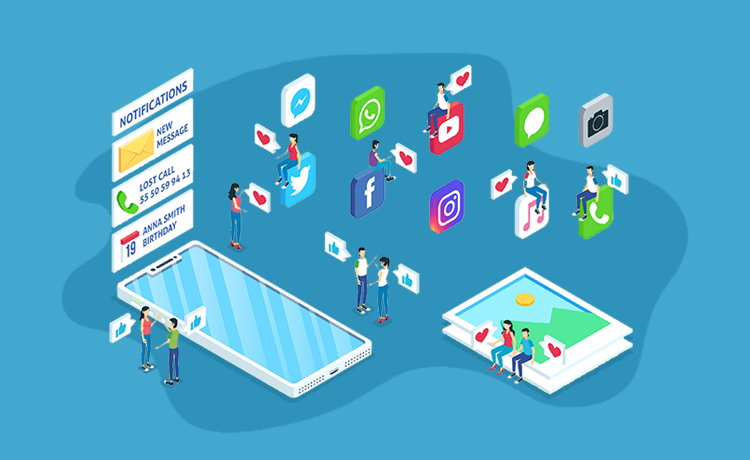In the digital marketing game, click-through rates (CTR) have long been the star player. A high CTR suggests an ad is captivating the audience, right? Well, not quite. While clicks indicate some level of interest, they don’t guarantee a commitment, like a purchase or signup. That’s where meaningful engagement and conversions come in.
This article dives into why focusing solely on CTRs can be misleading and explores strategies, with a particular focus on small businesses, to drive real results.
Why CTR Isn't the Whole Story
Factors like landing page quality, user experience, and ad relevance play a crucial role in converting clicks into meaningful actions:
Clicks Don't Equal Sales
A click means someone found your ad interesting, but it doesn’t ensure they’re ready to buy or fully understand your offering. Factors like landing page quality, user experience, and product/service relevance are crucial in converting clicks into sales.
According to WordStream, the average landing page conversion rate across industries is only 2.35%, highlighting the challenge of turning clicks into conversions.
Beware of Misleading Clicks
High CTRs can sometimes stem from clickbait – ads that overpromise and underdeliver. Users might click out of curiosity but quickly leave upon realizing the ad wasn’t relevant, leading to high bounce rates and low conversions.
A study by MarketingSherpa found that 61% of users are less likely to trust a brand after seeing misleading or clickbait-style ads.
Not All Clicks Are Created Equal
A targeted email campaign often generates more valuable clicks than generic search ads. Email subscribers are typically more familiar with and interested in your brand, making them more likely to convert.
Campaign Monitor reports that segmented email campaigns can lead to a 760% increase in revenue.

The Power of Meaningful Engagement
For small businesses especially, attracting quality clicks that convert is crucial. Here’s how to shift your focus:
Targeted Campaigns
Leverage customer data to personalize your marketing. Segment your email list for targeted recommendations based on purchase history or browsing behavior. For instance, a small e-commerce store can use customer purchase history to send tailored recommendations, making each email feel more relevant and increasing the likelihood of conversion.
According to eMarketer, personalized email marketing can improve click-through rates by an average of 14% and conversions by 10%.
Compelling Content
Ensure your ads and emails are relevant and valuable to your target audience. Content that resonates with your audience’s needs and interests is more likely to drive engagement. For example, a local gym could share fitness tips, success stories, and personalized class schedules to keep subscribers engaged and motivated.
HubSpot found that companies that blog receive 97% more links to their websites, underlining the importance of relevant content.
Landing Page Optimization
Optimize your landing pages for conversions with clear calls to action, a user-friendly design, and content that aligns with your ad’s message. For example, a small boutique could enhance their landing pages with customer reviews, detailed product descriptions, and a seamless checkout process to boost conversion rates.
Unbounce reports that using videos on landing pages can increase conversions by 80%.
Enhancing Engagement with Advanced Strategies
Utilize Social Proof
Incorporate testimonials, reviews, and case studies into your marketing materials. Social proof can significantly boost credibility and encourage conversions. For instance, a local restaurant could feature customer testimonials and high ratings on their website and social media platforms.
According to BrightLocal, 87% of consumers read online reviews for local businesses, highlighting the importance of social proof.
Implement Retargeting Campaigns
Use retargeting ads to re-engage visitors who have shown interest but didn’t convert. Retargeting keeps your brand top-of-mind and encourages users to return and complete their purchase. A small travel agency could use retargeting to show ads featuring special deals on previously viewed vacation packages.
Criteo reports that website visitors who are retargeted are 43% more likely to convert.
Leverage Influencer Partnerships
Collaborate with influencers who align with your brand to reach a broader and more engaged audience. Influencers can create authentic content that resonates with their followers, driving traffic and conversions. For example, a small skincare brand could partner with beauty influencers to showcase their products in tutorials and reviews.
According to Mediakix, influencer marketing can yield an average ROI of $5.78 for every dollar spent.
Why Email Marketing Reigns Supreme
Email marketing stands out as a champion for driving conversions for several reasons:
- Personalization Powerhouse: AI-powered tools can analyze customer data to craft highly personalized email campaigns. For instance, a bookstore sending reading recommendations based on past purchases significantly boosts sales potential. Experian found that personalized emails deliver six times higher transaction rates.
- Cost-Effective Champion: Compared to other channels, email marketing is budget-friendly. Small businesses can reach a large audience without significant financial investment. According to the DMA, email marketing has an average ROI of $42 for every dollar spent.
- Direct Communication Channel: Emails land directly in potential customers’ inboxes, fostering a personal connection that builds loyalty and increases conversion chances. A study by MarketingSherpa found that 72% of consumers prefer email as their source of business communication.
- Automation Advantage: Email marketing platforms offer automation features that save time and ensure consistent communication. Automated welcome emails, abandoned cart reminders, and follow-ups nurture leads and encourage conversions without constant manual effort. Omnisend reports that automated emails can generate 320% more revenue than non-automated emails.
New Features: A Boon for Some, Not All
Google Marketing Live 2024 showcased impressive features like 360-degree product views and in-ad videos. While these enhance the digital marketing landscape, their benefits might not be readily accessible to all businesses.
High-end fashion brands can offer 360-degree views of their handbags or travel agencies can showcase virtual tours of exotic destinations. These features enhance user engagement and boost conversions by providing a richer online experience. According to Adobe, videos can increase purchase intent by 97% and brand association by 139%.
In-ad videos and clickable stickers make ads more engaging and informative. For example, travel agencies can use in-ad videos to showcase breathtaking landscapes, while clickable stickers can lead users to special offers or testimonials.
However, creating high-quality videos or 360-degree product views can be resource-intensive for smaller businesses. The technical expertise required to implement and manage these features effectively can be a significant hurdle. Local bakeries or boutiques might struggle with the associated costs and complexity.
The Enduring Power of AI-Driven Email Marketing
In contrast, email marketing remains a cost-effective and efficient tool. With AI, email marketing has become even more powerful.
AI can analyze customer data to create highly personalized content. For example, a clothing store can use AI to send product recommendations based on past purchases, browsing history, and local weather, leading to higher open and conversion rates. According to a report by McKinsey, companies that use personalization can achieve 5-15% increases in revenue and 10-30% increases in marketing-spend efficiency.
AI automates tasks like segmentation, A/B testing, and performance analysis, saving time and resources. For example, a local gym can use AI to segment its email list based on members’ activity levels and send tailored workout tips and class schedules, thereby enhancing member engagement and retention.
Key Takeaways
- Focus Beyond CTR: While new AI-driven features like 360-degree product views, in-ad videos, and clickable stickers might increase CTRs, they don’t necessarily result in higher conversions. For small businesses, focusing on genuine engagement and conversions is crucial.
- Quality Over Quantity: Higher click-through rates without corresponding conversions can drive up the cost per lead (CPL), emphasizing the need for strategies that drive meaningful interactions and tangible business results.
- Harness Email Marketing: Email marketing, enhanced with AI, offers personalized, cost-effective, and automated solutions that can drive significant results for small businesses.
- Stay Agile: Adapt and optimize your marketing strategies based on performance data and customer feedback to ensure continuous improvement and relevance in the ever-evolving digital landscape.
By prioritizing meaningful engagement and utilizing effective tools like email marketing, businesses can achieve sustainable growth and build lasting relationships with their customers.




